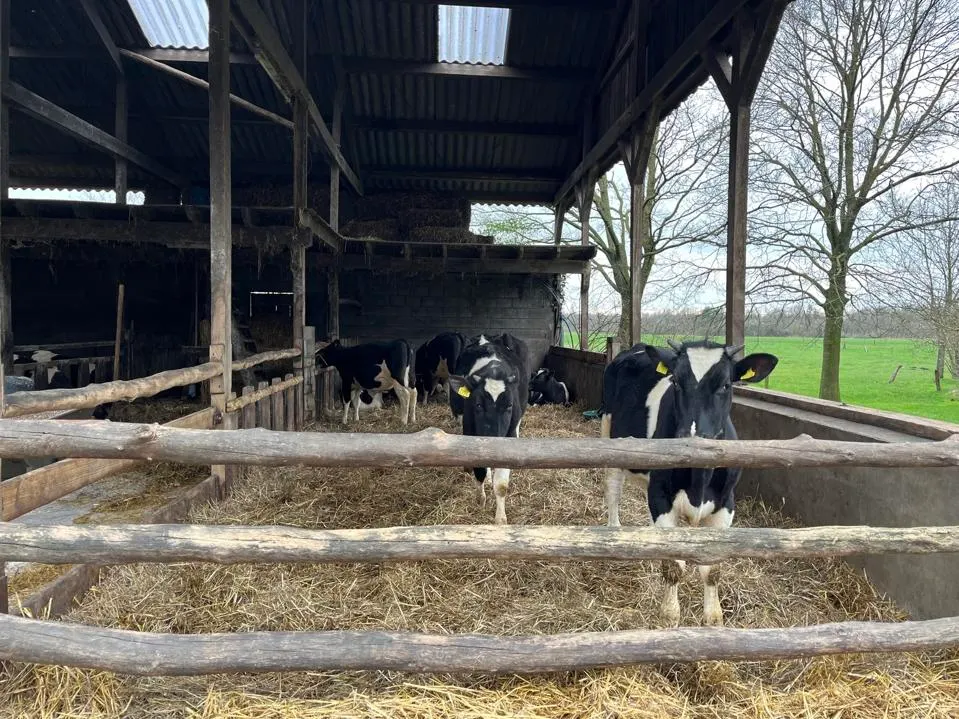The future of cows milk in our diet is up for discussion. It is the most consumed dairy product in the world by volume and in the UK is cheaper than bottled water. By an accident of genetics, Caucasian peoples are able to digest cows milk, but many are intolerant to some degree. In contrast Asian origin people are, post infancy, unable to digest cows milk.
“My career is founded on milk. Early on this was through the family farm. We milked about 36 cows to a bucket in traditional cowsheds. These cows frequently lived to 12 or more years of age. Later I attended Agricultural College and then University where I studied Agricultural Sciences. I am still learning about milk thirty six years later. I have spent most of my working life in the dairy industry mostly with cows but also with goats.”


Cow’s milk is not a great food source for vast numbers of people on our planet. There are good genetic reasons. This article from the BBC explains why; Why (some) humans have evolved to drink milk. This makes the future of cow’s milk a more interesting topic. It is a good reason to look at goat’s milk as an alternative. Why we Farm Cows and not Goats . . .


It is good and that is a blessing for our planet. There is no future for cows milk in our diet, but it is also worth pointing out that many of the alternatives are unsustainable too.
Quite simply it is an incredibly inefficient way to farm. Lets look at dairy farming in the UK. A considered good stocking rate here is a cow per acre or 2.5 cows per hectare. What does this mean? It means that all the food grown on the farm to feed one cow is produced from one acre. In terms of cows milk in our diet we must look at volume of milk produced per hectare per year as our efficiency measure plus the environmental and land area cost of imported resources (see below).
Each farm also uses resources from other farms and sources often in other countries. These are bought in feed, minerals, water, fertiliser and bedding products such as straw and sawdust, shavings or sand.
A high yielding dairy cow will eat 2.5 tonnes of concentrates each year. Concentrates are manufactured by combining other agricultural products such as Wheat, Barley, Maize, Beans, Peas and Soya. You may be aware that Soya is largely grown in the Americas and is controversial because rainforest is destroyed to grow Soya.
In order for a cow to produce cheese and milk and put cows milk in our diet, she must become sexually mature and then calve for the first time. The earliest this is achieved in reality is two and a half years of age. These growing animals use land, imported food and fertiliser too.
Our dairy pastures and silage fields kept for cows in England’s green and pleasant land are biodiversity deserts. They are more or less monocultures. They have no ground nesting birds. They are fertilised with 250 kg of nitrogen fertiliser per hectare per year. Production of a tonne of nitrogenous fertiliser results in two point five tonnes of CO2 (plus transport and tractor costs).
The more we dig into Cows Milk in our Diet, the more dangerous farming with cows looks when we dont need cheese at all and we should consume far less milk. I’m lucky, giving up cheese was easy as I’m lactose and dairy intolerant. Id felt ill for years, my son diagnosed as lactose intolerant so I behan to wonder. I stropped dairy and cheese completely, it was life changing. I lost weight, I am fitter and my digestive system is no longer disrupted. I’m sad as the majority of my career has been dedicated to dairy farming support, but I am a scientist and data and facts cannot and must not be ignored.
This is the sad sad end of an ancient tree in Rushden and it is…
The Enfield Oak is not as well known as the Sycamore which was wantonly vandalised…
Grazing pressure has transformed our world and it must be used again to transform it…
Fantastic, we can now have meat, sugar and butter grown in the lab. https://www.bbc.co.uk/news/articles/c2ern1zjkvyo Meat,…
Sugar and the Bees - Sustainable Food Production The use of neonicotinoids is controversial, but…
The concept of net zero is flawed, although achieving an equilibrium between carbon output and…
This website uses cookies.